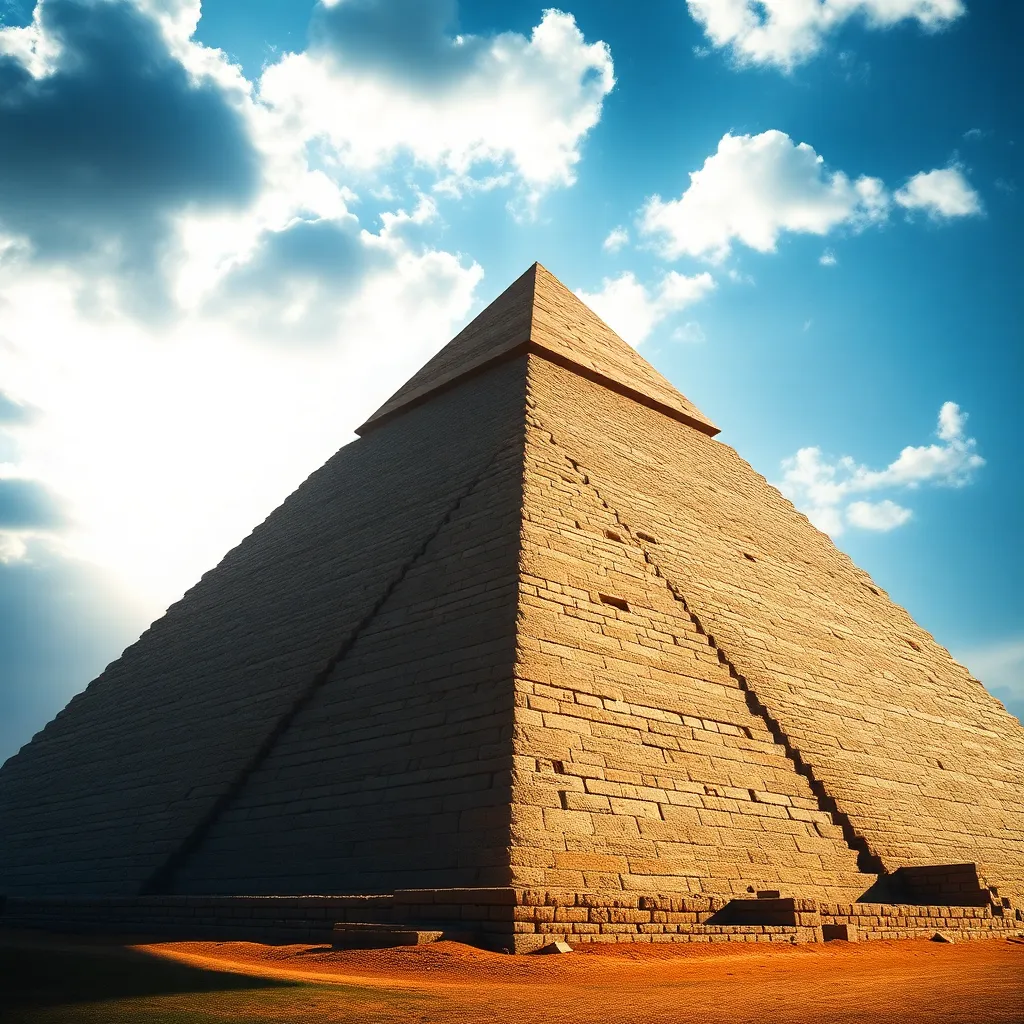The Pyramids of Egypt: Secrets of the Ancients
I. Introduction
The Pyramids of Egypt stand as monumental testaments to the ingenuity and determination of ancient civilizations. These colossal structures, primarily built as tombs for pharaohs, continue to capture the imagination of historians, archaeologists, and tourists alike. Their grandeur is not merely in their size, but also in their significance within ancient Egyptian culture, symbolizing power, spirituality, and the quest for immortality.
However, the pyramids are shrouded in mysteries and secrets that have puzzled scholars for centuries. From their construction techniques to their astronomical alignments, the enigma surrounding these ancient wonders invites exploration and speculation.
II. Historical Context
The era of pyramid construction, which spanned from approximately 2700 BC to 1700 BC, marked a significant period in ancient Egyptian history known as the Old and Middle Kingdoms. This was a time of immense architectural achievement and the establishment of a centralized state under powerful pharaohs.
Key pharaohs, such as Djoser, Sneferu, Khufu, and Hatshepsut, played pivotal roles in the evolution of pyramid design and construction. Djoser is credited with the Step Pyramid at Saqqara, the first large-scale cut stone construction, which paved the way for subsequent pyramids.
The transition from mastabas—flat-roofed structures serving as tombs—to the grand pyramids exemplifies the advancements in architectural design and the evolving beliefs regarding the afterlife.
III. Architectural Marvels
The pyramids are remarkable not only for their size but also for their engineering sophistication. Construction techniques varied, but several methods were commonly employed:
- Worker Organization: Large teams of workers were organized into crews, each responsible for specific tasks.
- Material Sourcing: Limestone, granite, and basalt were quarried and transported, often from distant locations.
- Ramp Systems: Ramps made of mudbrick or limestone were used to transport heavy stones into place.
The design and layout of the pyramids were meticulously planned. For example, the Great Pyramid of Giza was originally 146.6 meters tall and was aligned with incredible precision to the cardinal points of the compass. Innovations in engineering, such as the corbel arch and the use of a square base, set Egyptian pyramids apart from other ancient structures.
IV. Symbolism and Purpose
The pyramids were not merely architectural feats; they held profound religious significance. Ancient Egyptians believed in an afterlife, and the pyramids served as gateways for the deceased pharaohs to ascend to the heavens and join the gods.
The symbolism of the pyramids can be understood through several lenses:
- Religious Beliefs: The pyramids were seen as a means of ensuring the pharaoh’s immortality and divine status.
- Power and Authority: Building such monumental structures demonstrated the pharaoh’s wealth and power, consolidating their divine right to rule.
- Funerary Practices: The pyramids housed elaborate burial chambers and treasures, reflecting the importance of proper burial rites.
V. The Great Pyramid of Giza
The Great Pyramid of Giza, one of the Seven Wonders of the Ancient World, dominates the landscape of Giza. Originally built for the pharaoh Khufu, it is the largest of the three pyramids and remains a focal point of study.
Its dimensions are staggering, with a base of approximately 230.4 meters and a height of 146.6 meters. Theories regarding its purpose extend beyond mere burial; some suggest it also served as a celestial observatory or a symbol of the pharaoh’s divine connection.
Exploration of the internal chambers reveals complex passageways and the King’s Chamber, where Khufu’s sarcophagus lies. The precise alignment and construction methods continue to be subjects of extensive research.
VI. Mysteries and Theories
Despite extensive study, many questions about the pyramids remain unanswered:
- Construction Methods: How were such massive stones transported and placed with such accuracy?
- Alien Theories: Some fringe theories suggest that extraterrestrial beings assisted in their construction due to their monumental scale.
- Astronomical Alignments: The pyramids’ alignment with stars and constellations has led to theories about their astronomical significance and their role in ancient Egyptian cosmology.
VII. Archaeological Discoveries
Recent archaeological discoveries have shed light on the mysteries of the pyramids. Excavations have revealed:
- Workers’ Villages: Sites where laborers lived and worked have been uncovered, indicating a well-organized workforce.
- Tools and Artifacts: Tools used in construction and artifacts related to burial practices provide insight into the methods and beliefs of the time.
- Technological Advances: The use of modern technology, such as 3D scanning and ground-penetrating radar, has allowed researchers to explore areas previously inaccessible.
Preservation efforts are critical, as environmental factors and tourism pose significant challenges to the longevity of these ancient structures.
VIII. Conclusion
The pyramids of Egypt are more than just stone structures; they are enduring legacies of ancient civilization and human ingenuity. They encapsulate the beliefs, practices, and aspirations of a society that sought to transcend mortality through monumental architecture.
Continued research and exploration of the pyramids not only enhance our understanding of ancient Egypt but also reveal the remarkable capabilities of humanity throughout history. As we delve into the secrets of these ancient wonders, we uncover not only the past but also the timeless quest for knowledge and understanding that defines the human experience.




